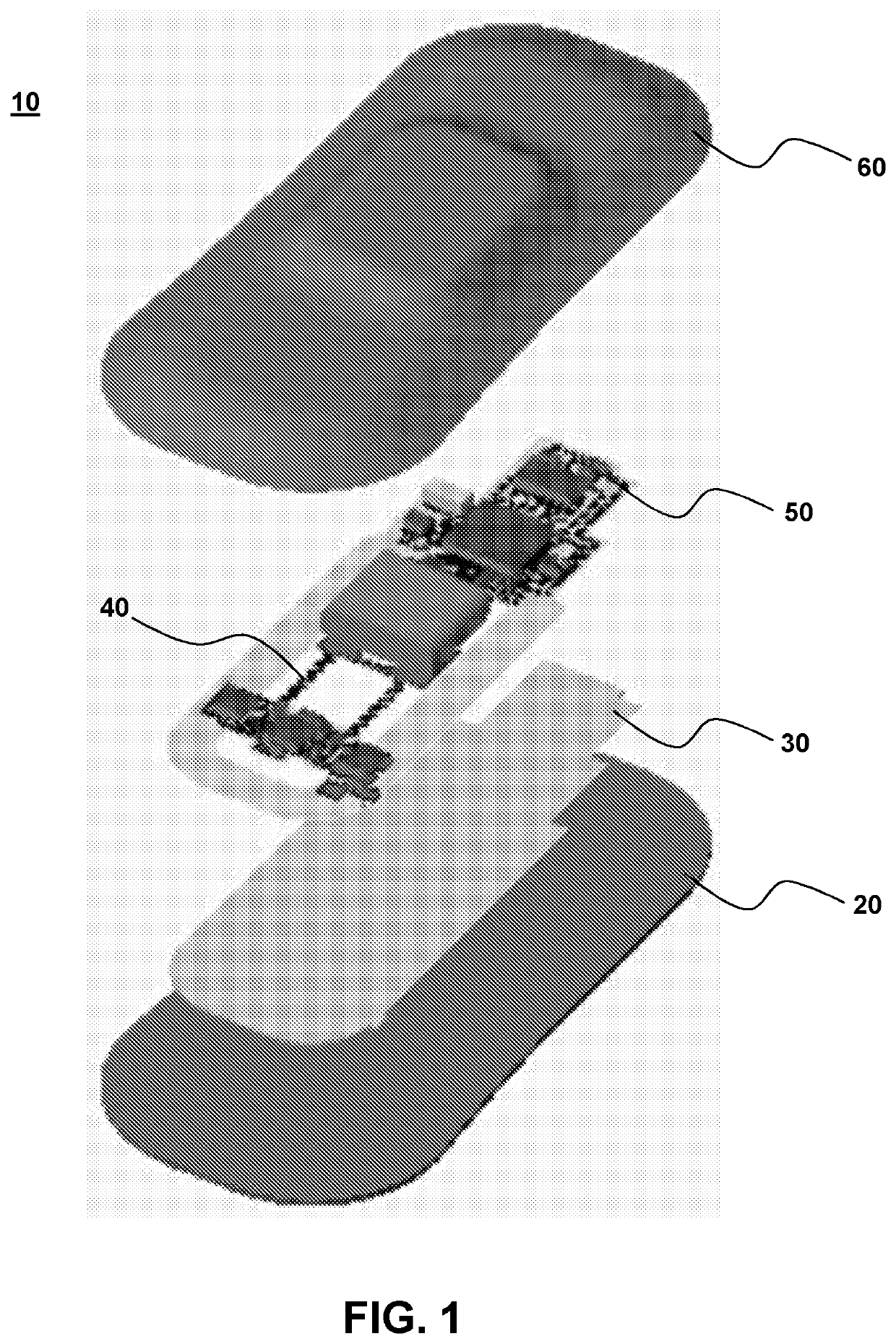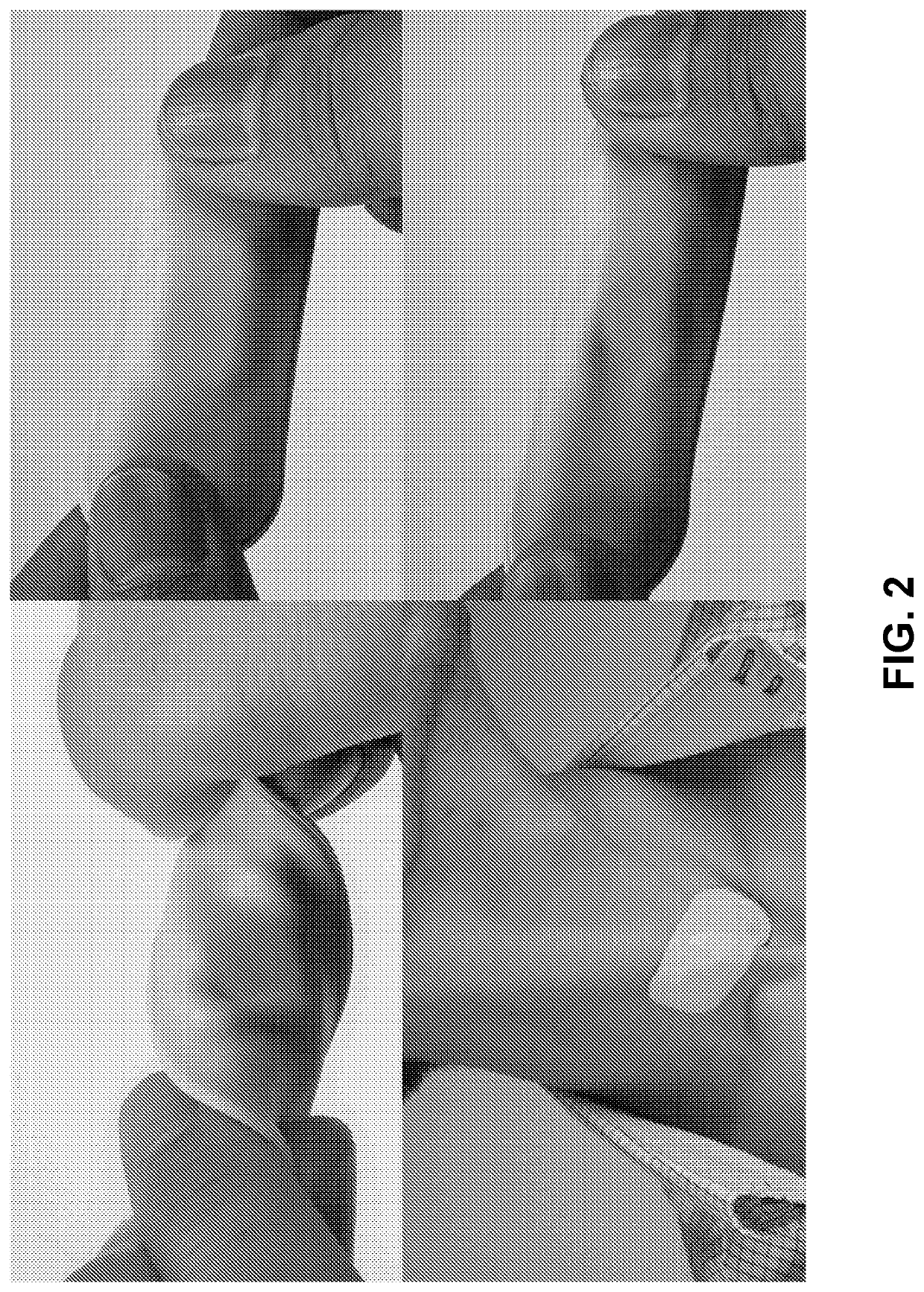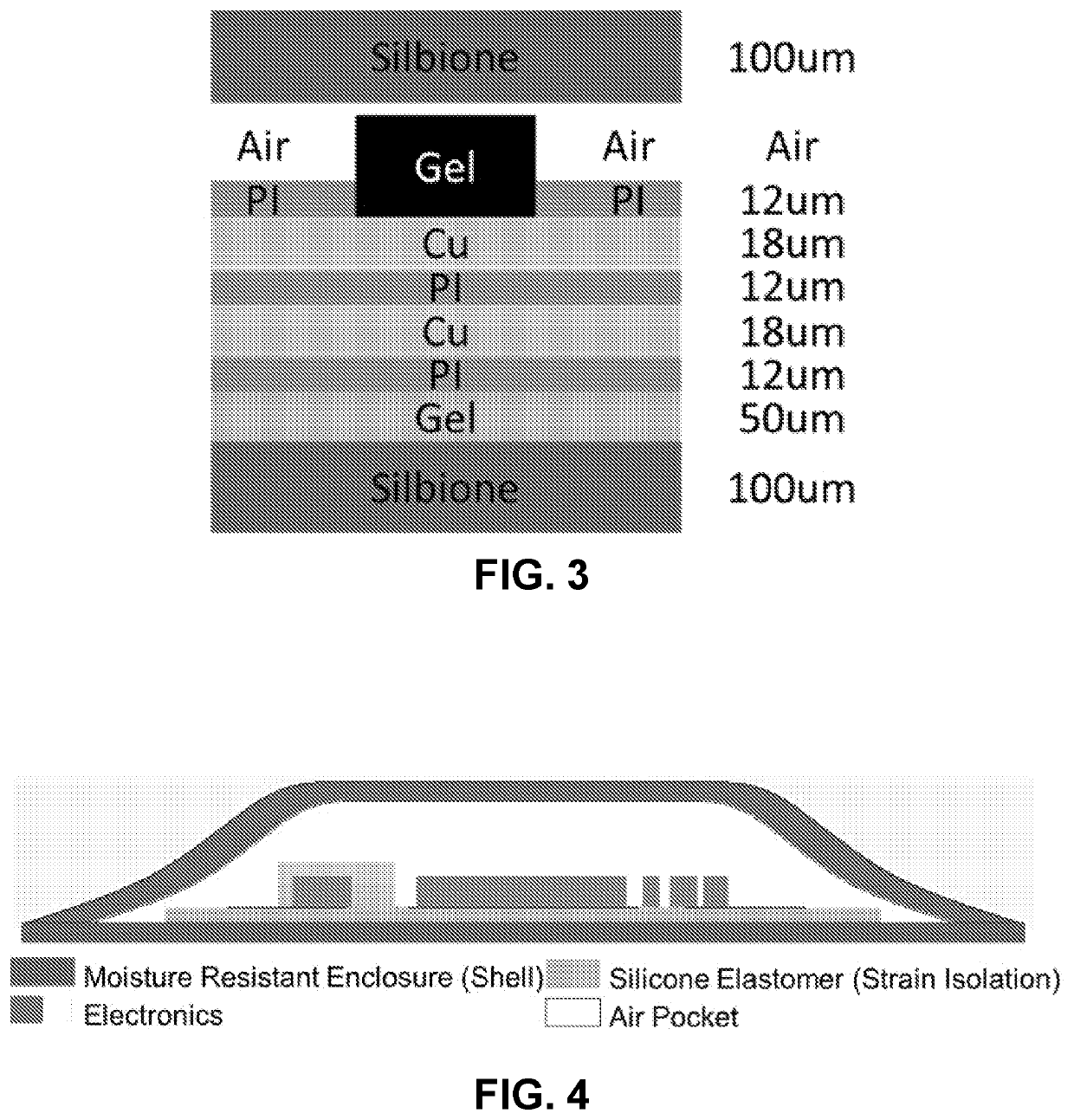Wireless medical sensors and methods
a wireless sensor and medical technology, applied in the field of medical sensors, can solve problems such as acoustic impedance mismatches with the skin, and achieve the effects of improving data collection and accuracy, more precise measurements or metrics, and improving data collection. or metric accuracy
- Summary
- Abstract
- Description
- Claims
- Application Information
AI Technical Summary
Benefits of technology
Problems solved by technology
Method used
Image
Examples
example 1
Epidermal Devices Employing Mechano-Acoustic Sensing and Actuation
[0241]Exemplary devices employing mechano-acoustic sensing and actuation were fabricated and tested with respect to overall functionality and mechanical properties.
[0242]FIG. 43B provides an exploded view of a mechano-acoustic device of the invention for epidermal sensing and actuation. As shown in the figure, a mechano-acoustic sensor is encapsulated in silicone elastomer substrate and superstrate (e.g. overlayer) components and include silicone gel layers to provide an overall multilayer floating device architecture. As shown the multilayer device comprises IC components, power sources (e.g, battery), traces including contact and interconnect components (e.g., flexible serpentine interconnects and contact pads), and interlayers (e.g., polyimide layers). The multilayer architecture and device components are arranged to allow for effective integration with the tissue (e.g., epidermis) of a subject and the ability to u...
example 2
Sensors for Early Triage of High-Risk Neonates for CP
[0247]The present example demonstrates usefulness of flexible wearable sensor devices of the invention for diagnostic applications including early triage of high-risk neonate subjects for cerebral palsy (CP). Predicting for eventual neurological function in at-risk neonates is challenging and research demonstrates that the absence of fidgety movements are predictive of the development of CP (see, e.g., BMJ 2018:360:K207). Assessment of CP in neonate subjects is performed typically by the General Movement Assessment (GMA), for example, corresponding to a 5 min video assessment of a supine infant with a standardized rubric.
[0248]In some embodiments, networked sensors provide additional value. The ability to assess—in time synchrony through a network of on body sensors—limb movement would allow for deeper insights on abnormal movements. Analogous to sleep—this would allow for visual reproduction of movements that could provide GMA-li...
example 3
coustic Sensing
[0258]Abstract
[0259]Conventional multimodal bio-sensing demands multiple rigid sensors mounting on the multiple measuring sites at the designated place and during the reserved time. A soft, and conformal device utilizing MEMS accelerometer is a game changer to this tradition. It is suitable for use in a continuous, wearable mode of operation in recording mechano-acoustic signals originated from human physiological activities. The virtue of device, including the multiplex sensing capability, establishes new opportunity space that continuously records high fidelity signal on epidermis ranges from the subtle vibration of the skin on the order of ˜5×10−3 m·s−2 to the large inertia amplitude of the body ˜20 m·s−2, and from static gravity to audio band of 800 Hz. Minimal spatial and temporal constraints of the device that operates beyond the clinical environment would amplify the benefit of unusual mechanics of the electronics. Therefore, we develop system level, wireless f...
PUM
 Login to View More
Login to View More Abstract
Description
Claims
Application Information
 Login to View More
Login to View More - R&D
- Intellectual Property
- Life Sciences
- Materials
- Tech Scout
- Unparalleled Data Quality
- Higher Quality Content
- 60% Fewer Hallucinations
Browse by: Latest US Patents, China's latest patents, Technical Efficacy Thesaurus, Application Domain, Technology Topic, Popular Technical Reports.
© 2025 PatSnap. All rights reserved.Legal|Privacy policy|Modern Slavery Act Transparency Statement|Sitemap|About US| Contact US: help@patsnap.com



